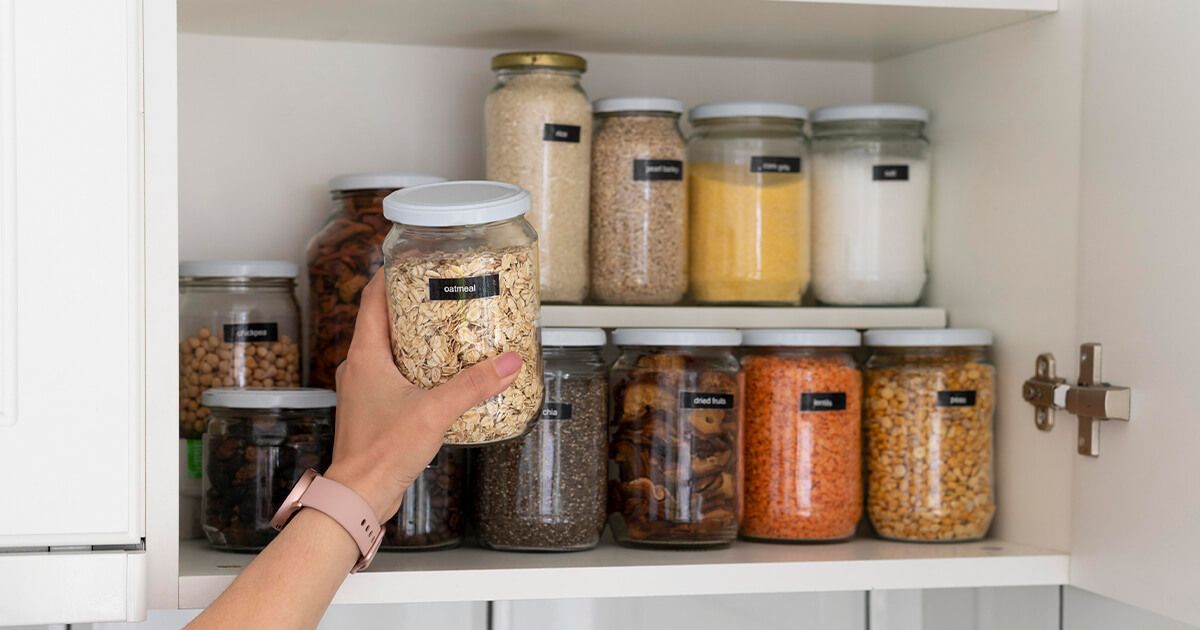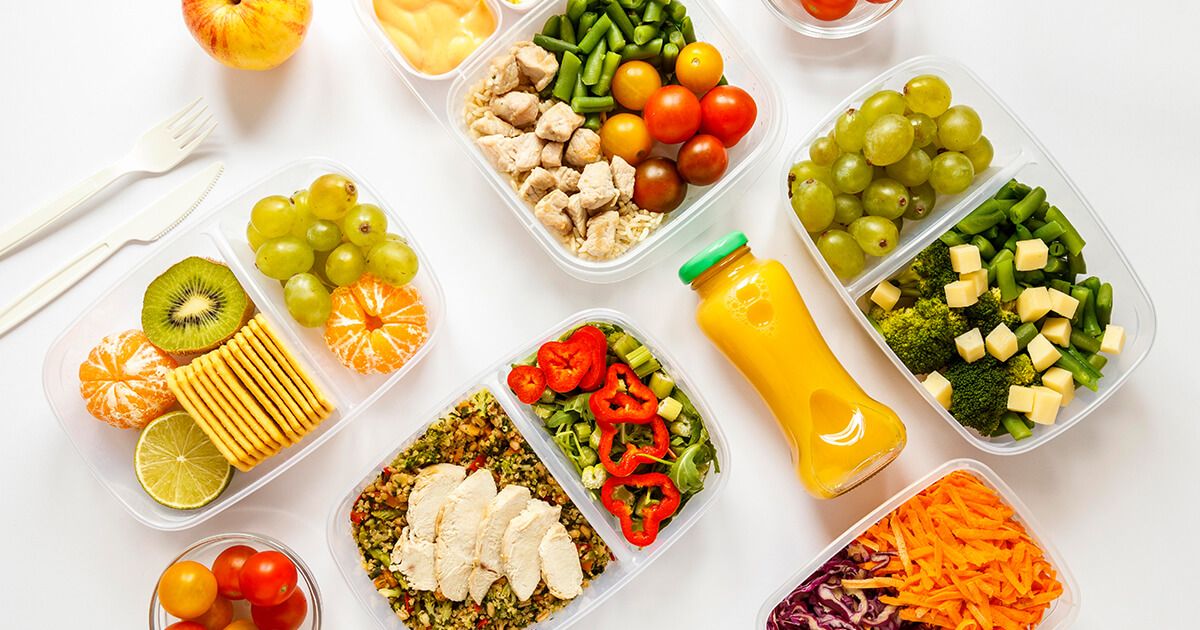Blog
Spring Cleaning Your Diet: 10 Tips to Freshen Up Your Eating Habits

The start of a new season is a great time to reimagine old habits. Many Canadians don’t follow diets that aim for optimal health. Luckily, changing those patterns is as easy as some springtime dusting.
The world we live in is fast-paced, and many of us find ourselves too busy to worry too much about the food we consume. In an ever-evolving world with plenty of modern conveniences, it’s easy to fall into habits that don’t best serve your overall health.
In this post, you’ll find 10 tips to help you spring clean your diet as we walk into warmer, sunnier days. We’ll also explore a bit of the science behind eating behaviours and physical health.
Eating healthy isn’t just about achieving an aesthetic goal. It’s about creating a foundation for good health in your future.
A review has shown that diets comprised primarily of whole foods – specifically ones containing whole grains, vegetables, fruit, fermented dairy, fish, olive, nuts, etc. – are associated with a lower risk of several preventable diseases.
As always, our team at Cook’s RX is here to help you in your health journey. You do not have to navigate this part of your life alone. If you’re still unsure about how to refresh your diet or anything else related to healthy living, reach out to us and we will help you out.
Why is Healthy Eating such a Hot Topic?
Simply put: The majority of Canadians don’t eat the recommended daily minimum of five servings of vegetables and fruit, which highlights a wee issue in our society’s eating habits.
According to Canada’s Food Guide, a healthy eating pattern is defined by two central messages: eating a diet that is rich in plant foods (fruit, vegetables, grains, nuts, seeds, beans, soy, etc.) and maintaining a diet that limits processed foods.
Why Should We Be Concerned About Having a Balanced Diet?
Eating healthy is highly associated with not only better health overall, but better mental well-being too. Having a healthy, balanced diet not only reduces the risk of multiple preventable diseases, it also reduces the risk of anxiety and depression.
Outside of just the obvious benefits, it also feels good to fuel your body well, boasting better energy levels and even clearer skin.
All of this sounds great, but how do you actually get started? So-called “junk foods” are often cheap and very accessible. They’re also a big part of our food culture. Well, luckily, we have ten tips to help you get started on your healthy eating journey:
1) Limit Certain Foods
Alcohol: While it’s OK to have the occasional drink, drinking in excess is hard on your liver – the organ that literally detoxes your body. Not to mention, alcohol is a diuretic, so it makes it more difficult to stay hydrated. Keeping your alcohol consumption to a minimum is ideal. If you find yourself missing your favourite cocktail, try a bit of tonic water with some juice for a nice fizz.
Added Sugars: Sodas and prepackaged foods are often loaded with tons of added sugar, which can lead to a myriad of health issues down the line. Instead, opt for naturally sweet foods like fruit.
Salt: Many processed foods contain high volumes of sodium, which isn’t good for overall health. Limiting salt intake is essential to having a healthy diet.
Processed Foods: A lot of processed foods contain many additives like salts, sugars, and trans fats. Keeping your food choices focused on whole foods is a great way to avoid these additives and keep your nutrition high. Common processed foods include frozen TV dinners, fast food, chips and other snack foods, etc.

2) Organize Your Kitchen
Nothing snuffs out your desire to make a meal than a disorganized kitchen.
So, with the nice spring weather soon upon you, open up those windows, get some fresh air, and freshen up your space!
Studies show that having a neat and tidy space aids in productivity and reduces feelings of anxiousness. If you’re able to come home to an organized, tidy space, preparing meals will be much easier – especially on those busier days.
3) Make Meals at Home
Speaking of cooking meals – making the majority of your meals at home is great way to ensure you know what’s going into your body.
Having the occasional takeaway is fine, but it’s better to prepare meals at home made of wholesome ingredients.
This is particularly helpful for those with certain food restrictions. An added bonus is you can make it exactly how you like it.
4) Eat More Whole Foods
Whole foods are naturally healthy foods such as fruits, vegetables, lean proteins, legumes, nuts, seeds, and more. By including a variety of whole foods, you can ensure you’re getting a variety of nutrients that your body craves to function well.
5) Optimize Your Freezer
At the start of a new season, it’s good to go through and clean out your freezer.
Decide what’s good to stay and what needs to go. Fill it up with convenient, pre-cut vegetables and fruits, as well as nifty freezer meals for those hectic days.
Making sure you have healthy options makes you more likely to make good choices.
6) Drink More Water
It might sound like a topic that’s been addressed to death, but many Canadians don’t drink nearly enough water.
Hydration is essential for the optimal function of your body’s organs. After all, your body can go longer without food than water, which speaks to how essential it truly is.
If you’re not a huge water drinker, try drinking sparkling water or adding sprits of lemon/lime to your H2O2. Try to drink an ounce of water for every pound of body weight each day.

7) Get Your Portion Sizes in Check
Learning what a proper portion size is can be challenging, but it’s worth it to know how much of each food group you need on your plate.
Too often, we under or over-estimate the number of calories in our meals and are none the wiser to just how much we’re actually eating. You can always refer to visual guides or use a food scale for reference.
Here is a basic breakdown of portion sizing for the four main food groups:
Fruits and Vegetables:
Aim for 2 to 2.5 cups of fruits per day.
Consume 2.5 to 3 cups of vegetables per day.
Check out our post on how to incorporate more fruits and vegetables into your diet!
Grains:
Choose whole grains whenever possible.
Recommended portion sizes vary, but generally aim for 6 to 8 ounces of grains per day.
Protein:
Consume 5 to 6.5 ounces of protein per day.
Opt for lean protein sources like poultry, fish, beans, nuts, and seeds.
Dairy:
Include 3 cups of dairy or dairy alternatives per day.
Choose low-fat or fat-free options like milk, yogurt, or cheese.
8) Check Out Your Local Farmer’s Market (Optional)
If you have the option to get some nice, local produce from the farmers in your area, this can be a great addition to your springtime diet cleanup. This allows you not only to support local farmers, but it gives you access to some of the freshest, tastiest produce available.
Some particularly healthy vegetables to consider include kale, broccoli, peas, carrots, beets, and spinach. There’s bound to be something you and your family can enjoy!
You can also consider plenty of fruits and fresh herbs, as well as natural honey. Yummy!
9) Only Buy What You Know You Can Eat Within a Week
One of the biggest pitfalls of any new diet is going into it with a lot of enthusiasm. Enthusiasm itself isn’t bad, but you’re going to be disappointed if you spend a small fortune on healthy foods only for them to go bad.
It’s better to go in with a list of things you’re sure you can finish by the end of the week than to buy a stockpile of food to spoil. This not only saves food, money, and time, it’s going to save you a lot of discouragement.
You can even consider making a food plan for the week and prep some of your ingredients to make it easier when it comes to putting meals together.
10) If This All Feels Like Too Much – Start Small!
Guidelines are great suggestions to get a rocket start on your goals, but life is stressful. If you’re finding bigger, more drastic changes aren’t sustainable for you, try making smaller shifts in your eating behaviours. Try thinking of a smaller eating habit you want to change, such as:
Eating less processed sugars. Make an easy swap by including more tasty fruits and naturally sweetened products.
Eating slower and more mindfully. Turn off your devices and focus while you eat.
Eating breakfast in the morning. This can be as simple as adding a smoothie to your morning routine instead of skipping a meal.
Once these little changes become easy, approaching larger tasks will seem less daunting to you in the future. Just keep at it!
Springtime is a great time to be out with the old and in with the new, including making positive changes to your diet. Remember, you don’t have to make drastic changes right away; small, meaningful adjustments can make all the difference.
If you feel at all lost or require additional guidance, don’t hesitate to speak to a medical professional. If you’re still unsure about how to refresh your diet or anything else related to healthy living, reach out to us and we will help.
Contributors
Latest Posts
Show All Recent Posts
Archive
-
2025
-
July
-
June
-
May
-
April
-
March
-
February
-
January
-
-
2024
-
December
-
November
-
October
-
September
-
August
-
July
-
June
-
May
-
April
-
March
-
February
-
January
-
-
2023
-
December
-
November
-
October
-
September
-
August
-
May
-
April
-
March
-
February
-
January
-
-
2022
-
December
-
November
-
October
-
September
-
August
-
July
-
June
-
May
-
April
-
February
-
